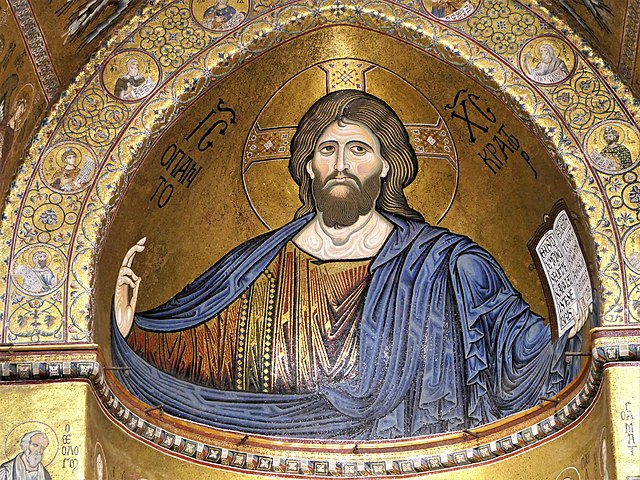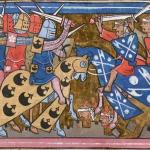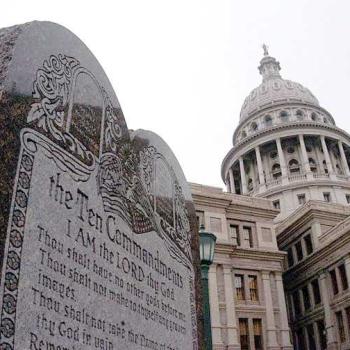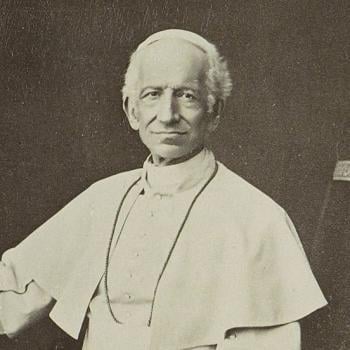What is Jesus mythicism? In general, it’s a proposal that Jesus Christ is entirely fictional and ahistorical. There are several variations of this proposal floating around. But the version that shows up frequently on social media is the argument that the life of Jesus Christ was based on earlier myths.
Further, the argument goes, the degree to which the life of Christ resembles earlier myths is proof that Christ is a myth also. In the past few weeks I’ve seen several different memes that propose Jesus was based on a number of famous mythical beings. From what I’ve seen, the favorite candidates for Template of Jesus are Osiris, Horus, Dionysus, Krishna, and Mithras. There are probably others I don’t know about.
I say Jesus mythicism is unvarnished hooey, for several reasons. I am a Buddhist and have no personal interest in defending the divinity of Jesus. So I’m not arriving at my opinion out of a need to defend Christian doctrines, which I respect even if I don’t share them. I’m just here to defend history.
Jesus Mythicism Gets Myths Wrong
The first thing you might notice about the fervently shared social media memes is that they get the myths wrong. No, the ancients didn’t claim that Dionysus, or Osiris, or Horus, or Krishna, were born of virgins. And it’s quite certain none were said to have been born on December 25, since the Julian calendar wasn’t in use in ancient Egypt or India or Greece. (Duh.) None had precisely twelve disciples. Also, none died by crucifixion or rose from a tomb after three days. It’s true that dying and rising deities were a common feature of ancient religions, but no proper god would have been executed by mere humans. And gods tended to die and come back in splashier ways. Osiris was cut to pieces and then put back together, for example.
I see that another Patheos writer, Keith Giles, has addressed some of the claims in the mangled myths in more detail. Basically, most of these Jesus mythicists are changing the old myths to fit the life of Jesus so that they can argue that the life of Jesus was based on old myths. This seems a tad dishonest. Some of them are even cranking out what look like scholarly research papers to support their mangled versions of myths. If you see such a thing, take note as to whether either the author or the research have any connection to academia, either a university or a recognized academic publication.
There are a number of different versions of Mithras, whose story (as Mithra) began in ancient Persia but in time was adapted by other people, including the Romans. I can’t speak to all of those. Mithras — who seems mostly associated with fighting bulls — doesn’t appear in the Roman records until the 1st century CE. I’ll address some issues with Mithras later in this article. See “And About December 25.”
Ancient People Were Into Myths
Ancient biographers often graced the lives of important historical figures with details of dubious authenticity. This is called hagiography, a term built from Greek words meaning “saintly” or “holy” and “to write.” The biographical details of important and admired people couldn’t be left alone but had to be enhanced to reveal superhuman virtue and capabilities. As a history nerd who writes about Buddhist history quite a bit, I often run into people known to have been actual historical figures who were said to have magic powers of some sort or who were born or died in some kind of supernatural way.
This includes the Buddha, who is presented to us in early scriptures and the Buddhacarita as the son of a king. But historians say his clan, the Shakya, didn’t have kings. And we also see the story of the life of the Buddha growing more and more elaborate, and more stuffed with supernatural details, through the centuries. The point is that a mythologized biography is not, by itself, proof that a historic person never lived. It’s also the case that myths themselves tend to follow similar patterns and recurring themes. See Joseph Campbell’s masterpiece The Hero With a Thousand Faces on that point.
My book The Circle of the Way: A Concise History of Zen from the Buddha to the Modern World (Shambhala, 2019) often compares traditional stories about Zen history with what the academic historians say happened. And no, often they don’t match. That doesn’t mean that all of the people in the traditional stories are fiction. Most of them — there are exceptions — are considered by historians to have been real people who lived real human lives. The myths grew around them as they faded from living memory. This is very common in historical narratives written before the modern era.
What the Scholars Say About Jesus Mythicism
In the 19th century scholars began to apply the same tools of critical analysis on the life of Jesus that they were using on other historical figures. Since the early 20th century there has been nearly universal consenses in academia — including among non-Christian scholars — that there was a real man whose life served as the foundation of the story of Jesus. It’s also broadly agreed that this original Jesus (derived from the Greek form of the Aramaic name Yeshua) doesn’t appear to have claimed to have been a messiah or son of God. He was the leader of a small group of followers and may have been focused on reforming Judaism (see, for example, the work of Paula Fredriksen of Boston University) or possibly was an anti-Roman occupation activist (see Reza Aslan). Claims that he was a messiah or world-redeemer may not have begun to circulate until after he was crucified.
One of the primary defenders of the historical Jesus, the scholar Bart Ehrman, has argued that if someone were going to make up a myth about a messiah out of whole cloth, it’s unlikely they would have arrived at the Gospel narratives about Jesus. “The Messiah was supposed to overthrow the enemies – and so if you’re going to make up a messiah, you’d make up a powerful messiah,” he told an NPR interviewer. “You wouldn’t make up somebody who was humiliated, tortured and then killed by the enemies.”
The fact is that nearly all scholars of antiquity agree there was a real man whose life was the original template for Jesus of Nazareth. This is not the same thing as saying that this man was God, just that he was historical.
Jesus Mythcism: Where Are the Records?
Mythicists like to point out that Jesus was never mentioned in any Roman sources. Bart Ehrman and other historical scholars will tell you that such records exist for almost no one. No, there is no documentation of Jesus that date to his lifetime. I hate to break it to you, but ancient history is robustly populated with people who lack extant, direct contemporary records that they existed. There are no records of the life of the Greek mathematician-philosopher Pythagoras, for example. What we know about him was written by admirers after he died. (His admirers believed Pythagoras had magical powers, btw.) Kongji, better known in the West as Confucius, left us significant writings but no records that date to his lifetime. This was one of the most significant people in all of Asian history. Confucius is understood as a real historical figure, but his contemporary Laozi (or Lao tsu), said to be the author of the Daode jing (or Tao te ching) is probably an invention. Likewise there is disagreement whether Homer, the attributed author of the Iliad and the Odyssey, was a real person.
These are not isolated examples. As I understand it, when there are no contemporary records historians apply critical analysis to the posthumous writings of admirers, compare stories of the individual’s life to what is know of that historical period, and also consider the body of work attributed to that individual to decide where a person fits into history, or not. As far as Jesus is concerned, I say somebody delivered the Sermon on the Mount from the Gospel of Matthew, and that person is worth remembering. But ancient people on the whole were haphazard record keepers, and what records that might have been kept could have been lost in wars and other disasters.
While there are no records of Jesus that date to before the crucifixion, there are several that date to later in the 1st century CE. This is actually remarkable for a figure who was born into a common family of an occupied people far from centers of power. Bart Ehrman says there are several references to Jesus in multiple sources that date to within a few years of his passing, which is more than you can find for many other historical figures. It is simply not true that there is no evidence of the life of Jesus whatsoever.
And About December 25
There is a sub-branch of Jesus mythicists who have decided that Jesus was entirely invented, and the Gospels and other New Testament books written, in the 4th century. This was allegedly done at one of the ecumenical councils, such as the First Council of Nicea convened by the Emperor Constantine in 325 CE. Historical scholarship says that all of the books of the New Testament were written between 50 and 120 CE. There are no records showing books of the New Testament being composed later. So this is a matter of mythicists believing what they want to believe, the fault of which they accuse Christians.
It is true, however, that the Church in Rome first began celebrating Christmas on December 25 in the year 336, and it’s believed this was done to take attention away from pagan winter solstice observances. These included the Roman cult of Mithras, very popular at the time, which observed the birthday of that deity on December 25. And so in this one instance we do see Christianity bending to earlier myth. The only hint of the season of Jesus’ birth in the Gospels — that shepherds were watching their flocks by night — points to spring lambing season.














